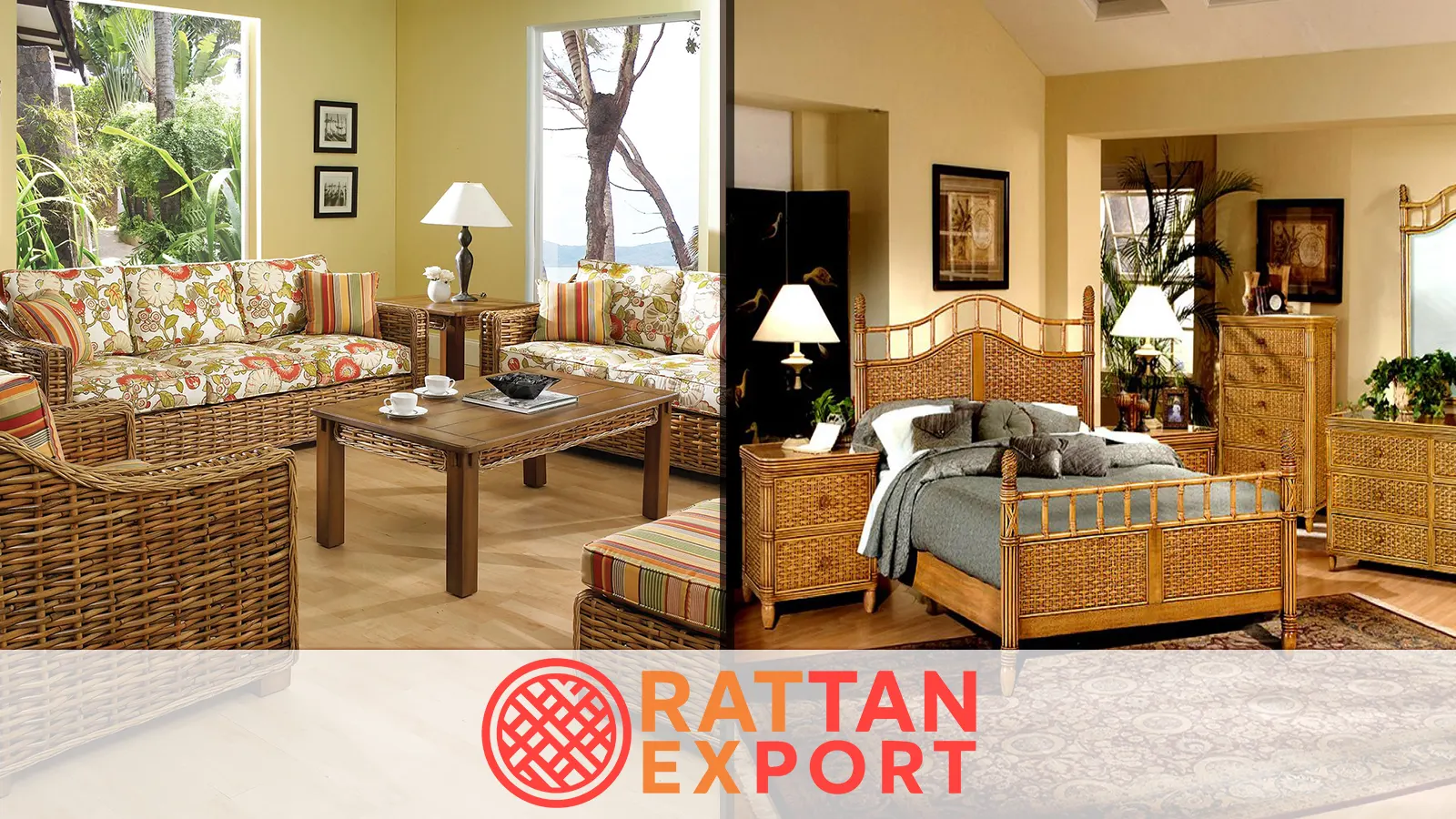Rattan Cane
Rattan cane is one of the most versatile natural materials in the world of furniture and interior design. Harvested primarily from tropical regions such as Indonesia, Malaysia, and the Philippines, rattan cane is prized for its strength, flexibility, and aesthetic appeal. It is a sustainable resource that grows rapidly and can be used in many ways, from furniture frames to woven panels and decorative accessories. Rattan cane embodies a perfect balance between traditional craftsmanship and modern design, making it an essential material for eco-conscious furniture production. From chairs and tables to wardrobes and lighting fixtures, rattan cane is at the heart of countless timeless creations that bring warmth and tropical charm to homes, hotels, and resorts worldwide.
What is Rattan Cane?
Rattan cane refers to the outer skin or peeled strips of rattan stems. It is harvested, dried, and processed into long strands that can be woven into furniture and decorative items. Unlike bamboo, rattan cane is solid throughout, which makes it more durable and flexible. It is widely used for chair seats, backrests, and bindings in rattan furniture. The smooth texture and natural golden colour of rattan cane add elegance and uniqueness to each handmade product. Its ability to be bent and woven makes it a favourite among artisans.
Why Choose Rattan Cane?
There are many reasons why rattan cane remains a top choice in furniture design:
- Sustainability: Rattan is a renewable resource that grows quickly and regenerates naturally.
- Durability: Stronger than many hardwoods when woven properly, lasting decades with proper care.
- Flexibility: Easily bent and shaped into intricate patterns.
- Lightweight: Provides strength without excessive weight.
- Aesthetic Appeal: Its natural texture and golden colour enhance the tropical look of interiors.
Applications of Rattan Cane
Rattan cane has a wide variety of applications:
- Furniture: Used in chairs, tables, sofas, wardrobes, and cabinets.
- Bindings: Essential for securing joints in rattan furniture frames.
- Decorative Panels: Woven cane panels for doors, screens, and partitions.
- Lighting: Cane weaving for lampshades and hanging lights.
- Accessories: Baskets, trays, and home décor items.
Rattan Cane vs Other Materials
Compared to synthetic fibres or hardwoods, rattan cane offers unique benefits:
| Aspect | Rattan Cane | Wood | Synthetic Materials |
|---|---|---|---|
| Sustainability | Renewable, grows quickly | Requires decades to mature | Non-renewable, petroleum-based |
| Durability | Strong and flexible | Strong but heavy | Durable but less authentic |
| Weight | Lightweight | Heavy | Varies |
| Aesthetic | Natural tropical look | Classic but less airy | Can mimic natural look but lacks authenticity |
Craftsmanship and Production
Rattan cane is harvested by skilled workers, then peeled, dried, and polished. The cane strips are cut into various thicknesses depending on their intended use. Artisans then weave them into intricate patterns such as basket weave, herringbone, or diamond. These weaving techniques are passed down through generations in Indonesia, especially in Bali, Cirebon, and Lombok. Each handmade piece represents a blend of tradition, artistry, and modern design.
Sustainability and Eco-Friendly Benefits
Rattan cane is an environmentally friendly material. It grows rapidly, often reaching maturity within 5–7 years, unlike hardwood trees that take decades. Harvesting rattan encourages forest conservation because it provides economic value to maintaining rainforests. Additionally, rattan cane products are biodegradable, making them a sustainable choice for eco-conscious consumers. Supporting rattan industries also helps local artisan communities in Southeast Asia.
Durability and Longevity
Rattan cane, when properly treated and maintained, can last 20–30 years. It is resilient against everyday wear and tear and can withstand significant weight. However, natural rattan cane should be kept in indoor or semi-outdoor areas to avoid prolonged exposure to rain and direct sunlight. Synthetic versions of rattan cane (PE cane) are available for outdoor use, offering enhanced weather resistance.
Maintenance Tips
Taking care of rattan cane is simple:
- Dust regularly with a soft cloth or brush.
- Wipe with a damp cloth and mild soap for stains.
- Avoid soaking in water to prevent weakening.
- Apply natural oils once a year to maintain flexibility.
- Keep away from direct heat sources to avoid cracking.
Price Range of Rattan Cane Products
The price of rattan cane furniture varies depending on size, design, and craftsmanship. Below is a comparison:
| Product Type | Price (USD) |
|---|---|
| Rattan Cane Dining Chair | ~120 |
| Rattan Cane Coffee Table | ~215 |
| Rattan Cane Wardrobe | ~600 |
| Luxury Rattan Cane Sofa Set | ~1.200 |
Export and Global Demand
Indonesia is the largest exporter of rattan cane furniture in the world. Production centres in Bali, Java, and Lombok are renowned for their high-quality craftsmanship. Thousands of rattan cane products are exported annually to Europe, the United States, and the Middle East. Exporters typically work under FOB (Free On Board) or Ex-Works terms, ensuring safe packaging and international shipping. Buyers often request customised designs tailored to their markets. With growing demand for eco-friendly and tropical-style furniture, rattan cane continues to dominate the global furniture industry.
Conclusion
Rattan cane is more than just a material—it is a symbol of sustainable living, artisan heritage, and tropical elegance. Its strength, flexibility, and eco-friendly properties make it an ideal choice for modern furniture production. Whether used in homes, hotels, or resorts, rattan cane furniture delivers timeless beauty and functionality. Investing in rattan cane means embracing a future of sustainable design while supporting local artisans and preserving cultural traditions.
